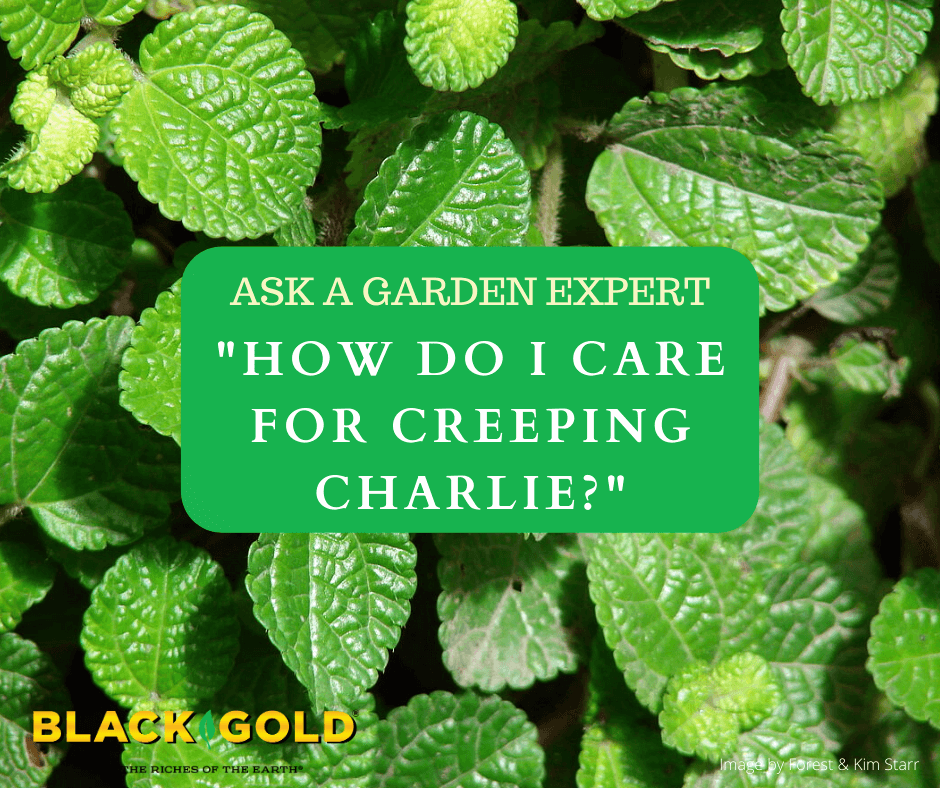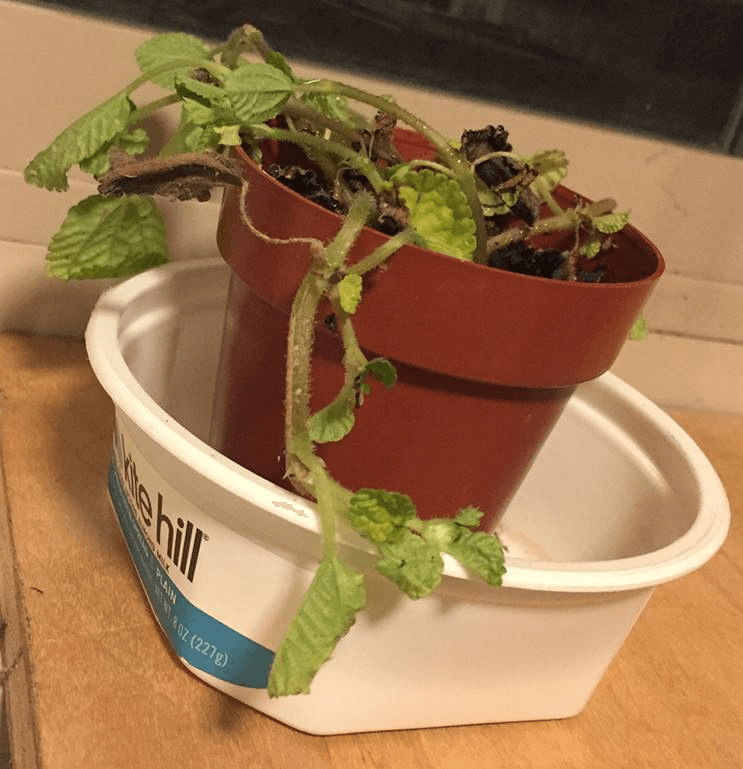
“I recently purchased this Creeping Charlie for indoors, and again, received not so great information (let it dry fully before adding water, etc.). It was fine one morning (there had been some brown leaves, which I was told was because I was overwatering it), but when I got home, it looked like this (image below). Water brought it back somewhat. Now only two of the groups of leaves you can see above remain. I am assuming that putting it in a larger pot will help keep more consistency in the moisture, but need to know what of your products should I use (and if possible, again, recommendations for pot size, methods, etc.). It gets mostly filtered sunlight here, with a few minutes a day of direct sunlight.” Question from Joseph

Answer: Creeping Charlie (Pilea nummulariifolia) is a tropical groundcover native to the Caribbean and areas of South America that grows beautifully as a trailing house plant. Yours needs a new home and a little care to bring it back to glory, but it is not beyond hope. It is quite easy to grow once you know what it needs.
Creeping Charlie Care
Choose a larger well-drained pot with holes at the bottom and a saucer to catch water. A 6-8” pot would suffice. Black Gold All Purpose Potting Mix would be perfect for its needs. Creeping Charlie (Pilea nummulariifolia) likes even moisture, but allow it to dry out somewhat between watering, and water it less in winter–maybe once a week or so. Give it bright, indirect light, and feed it lightly with a slow-release fertilizer formulated for house plants. When it outgrows its pot, repot in spring. Like most tropicals, it likes some ambient humidity, so avoid planting it near vents or fans where it will be subjected to dry air.
Consider bringing it outdoors in summer to encourage more vigorous growth. Just be sure to clean it before bringing it inside for winter (click here to learn how to clean your plants before bringing them indoors for winter).
I hope that these tips help!
Jessie Keith
Black Gold Horticulturist

